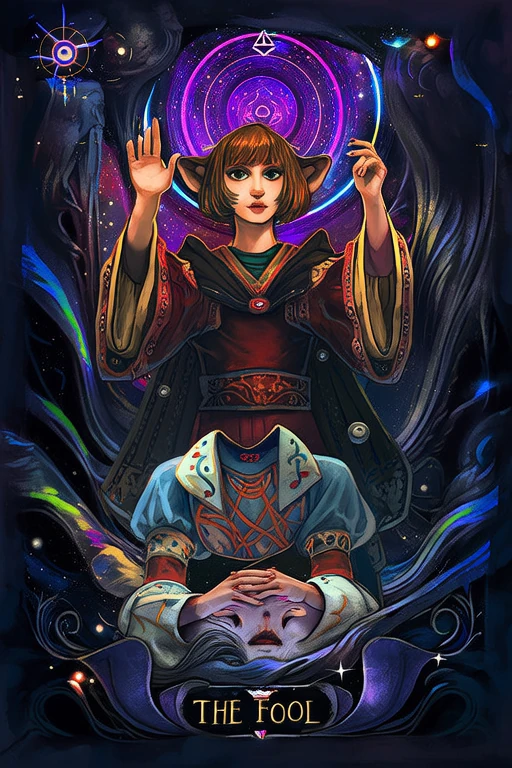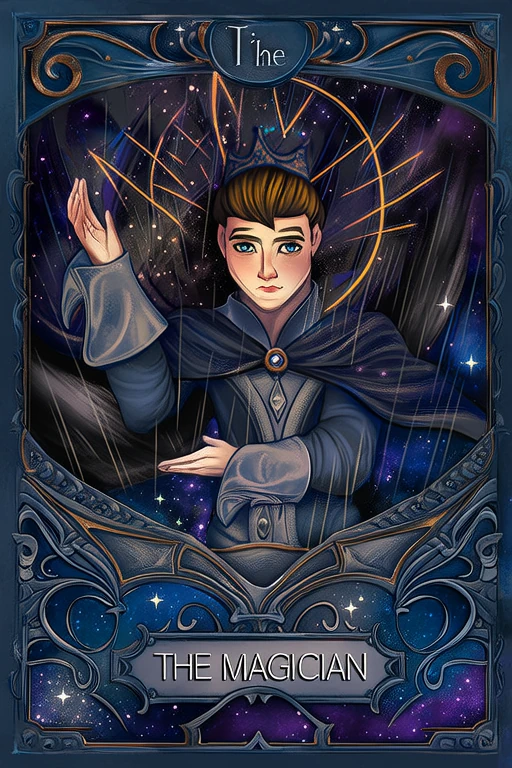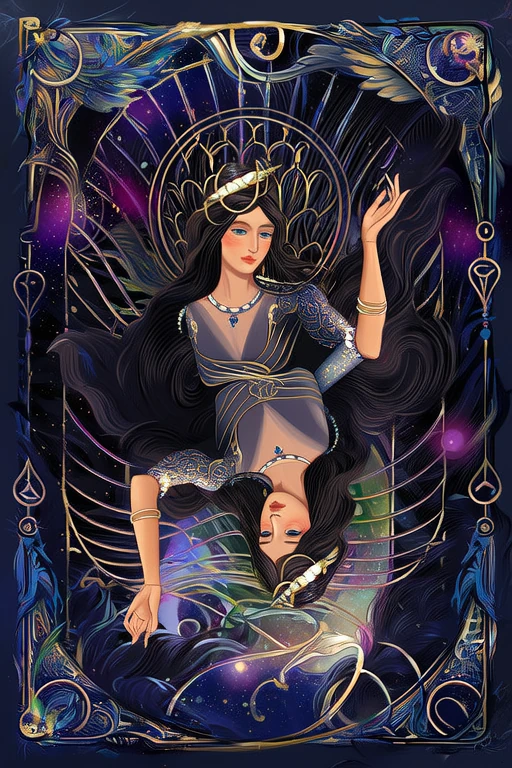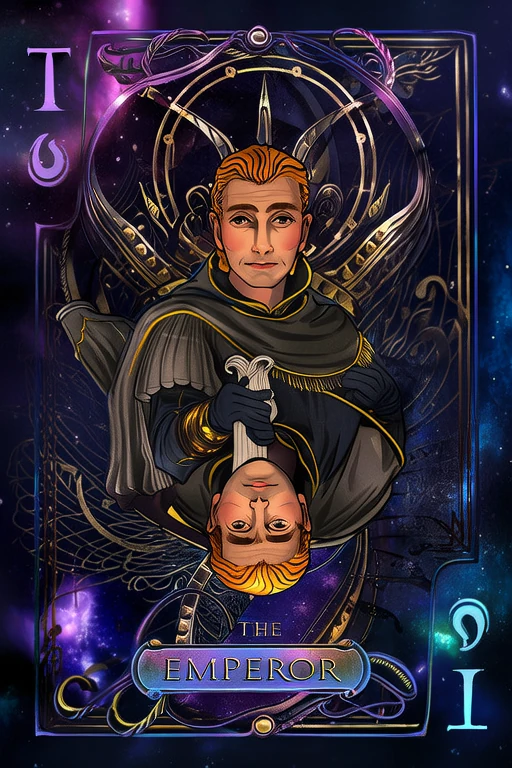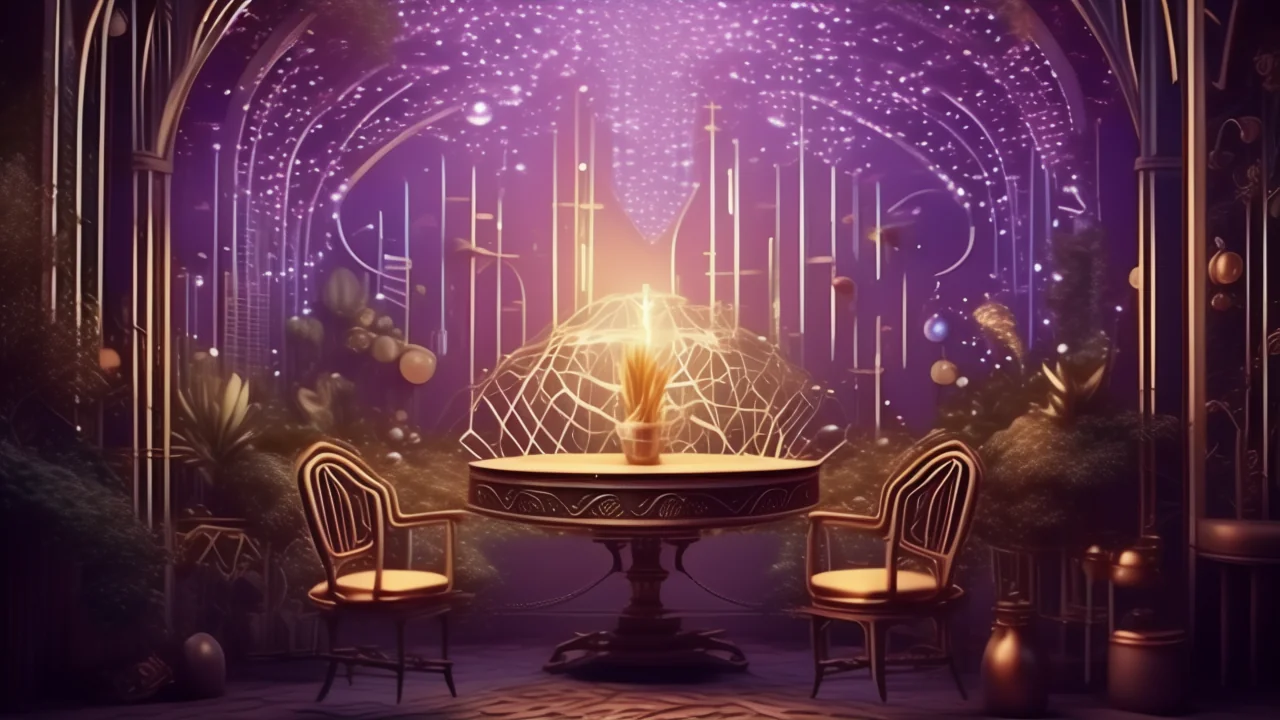
The High Priestess
Discover the deep meaning of The High Priestess with our free AI-powered tarot interpretation. Get instant, accurate readings based on advanced tarot knowledge.
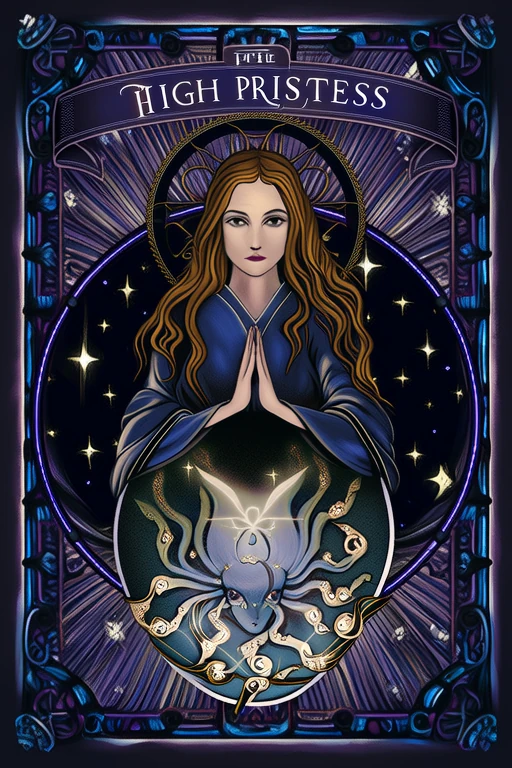
Keywords
Upright Meaning
Intuition, sacred knowledge, divine feminine, subconscious mind
Reversed Meaning
Secrets, disconnected from intuition, withdrawal
Full Interpretation
The High Priestess represents intuition, inner knowledge, and the mysteries of the subconscious mind.
In-Depth Analysis
📜 Historical Background
The High Priestess, also known as La Papesse or The Female Pope in some early decks, is the second card in the Major Arcana of the Tarot. Her origins trace back to 15th-century Europe, particularly in the Italian Visconti-Sforza decks, where she was depicted as a female pope, a powerful and controversial figure. This imagery likely reflects the medieval legend of Pope Joan, a woman who supposedly disguised herself as a man and rose to the papacy in the 9th century before her identity was discovered. Although the historical accuracy of Pope Joan is debated, her story became a powerful symbol of female wisdom and spiritual authority, themes that are central to The High Priestess card.
In early tarot decks, such as the Marseille Tarot, The High Priestess was often portrayed as a seated woman holding a papal cross or a book, flanked by two pillars—often labeled J and B, representing the pillars of Jakim and Boaz from Solomon’s Temple. These pillars symbolize duality and the balance between opposites, a recurring theme in her symbolism. Over time, especially in the occult revival of the late 19th and early 20th centuries, the card evolved to take on more mystical and esoteric meanings.
The Hermetic Order of the Golden Dawn and later Aleister Crowley further refined the symbolism of The High Priestess, linking her to the Moon and the Hebrew letter Gimel. These associations deepened her connection to intuition, the subconscious, and hidden knowledge. In the Rider-Waite-Smith deck, illustrated by Pamela Coleman Smith and designed by A.E. Waite, The High Priestess is depicted as a serene woman seated between two pillars of black and white, with a veil behind her covered in pomegranates—symbols of fertility and mystery. She holds a scroll labeled 'Tora' (suggesting divine law and knowledge), emphasizing her role as a keeper of sacred wisdom.
Across different cultures and traditions, The High Priestess has been interpreted in various ways. In some Eastern traditions, she is likened to the feminine divine, such as Kali or Durga, while in Western mysticism, she aligns with figures like Hecate or the Virgin Mary. Her presence in the tarot reflects a universal archetype of the wise woman, the seer, or the guardian of secrets. As tarot evolved into a tool for psychological insight and spiritual guidance, The High Priestess became a symbol of inner knowing, intuition, and the unseen forces that shape our lives.
Symbolism & Imagery
The High Priestess is rich in symbolic meaning, with every element of her imagery carrying deep spiritual and psychological significance. At the center of the card is the Priestess herself, seated between two pillars—one black and one white. These pillars represent the dualities of life: light and dark, masculine and feminine, conscious and unconscious. They also echo the pillars of Solomon’s Temple, symbolizing wisdom and strength, and serve as a reminder of the balance required to access deeper truths.
Behind her is a veil adorned with pomegranates, a fruit associated with fertility, life, and death. In Greek mythology, pomegranates are linked to Persephone’s descent into the underworld, symbolizing the cyclical nature of life and the mysteries hidden beneath the surface. The veil itself is a barrier between the material and spiritual worlds, and the Priestess guards this threshold, offering access to inner wisdom for those who seek it.
She holds a scroll labeled 'Tora'—a reference to divine law and knowledge. This scroll suggests that she is a keeper of sacred texts and esoteric teachings, and her calm demeanor reflects her mastery over the hidden realms of the psyche. Her blue robe is adorned with a cross, symbolizing spiritual authority and divine connection, while the white garment beneath suggests purity and spiritual preparation.
Colors play a vital role in interpreting The High Priestess. The black and white pillars represent duality and balance, while the deep blue of her robe signifies intuition, mystery, and the subconscious. The red of the veil hints at passion and life force, and the silver of the crescent moon above her head connects her to lunar energy, intuition, and the cyclical nature of time.
In a reading, The High Priestess upright signifies intuition, inner wisdom, and the need to trust one’s instincts. She encourages the seeker to look inward and listen to their inner voice. When reversed, she may indicate blocked intuition, confusion, or the need to confront hidden truths.
Culturally, interpretations of The High Priestess vary. In some traditions, she is seen as a maternal figure, offering guidance and protection. In others, she is a symbol of the divine feminine, representing the balance of energies in the universe. Her connection to other cards, such as The Moon (which she shares astrological ties with) and The Empress (as a progression from intuition to manifestation), further emphasizes her role in the journey of self-discovery and spiritual awakening.
Psychological Insights
From a psychological perspective, The High Priestess aligns closely with Carl Jung’s concept of the anima—the feminine aspect present within the male psyche—and the archetype of the Wise Woman or Crone. She represents the intuitive, receptive, and mysterious side of the human psyche, often associated with the unconscious mind and the realm of dreams, emotions, and symbols. In Jungian terms, the High Priestess embodies the process of individuation—the integration of the conscious and unconscious self—inviting individuals to explore their inner world and uncover hidden truths.
In modern life, The High Priestess encourages introspection and the cultivation of inner wisdom. She appears when one is called to trust their intuition, especially in situations where logic and external evidence are insufficient. Her presence in a reading often suggests that the answer lies within, urging the seeker to pause, reflect, and listen to their inner voice before making decisions. This is particularly relevant in today’s fast-paced, information-saturated world, where overthinking and external validation can cloud one’s natural instincts.
For personal growth and self-awareness, The High Priestess serves as a guide to deeper self-understanding. She invites individuals to explore their subconscious patterns, emotional triggers, and unspoken needs. By engaging with her energy, people can learn to honor their intuition and develop a stronger relationship with their inner knowing, leading to more authentic and aligned life choices.
Therapeutically, The High Priestess can be a powerful tool in counseling and shadow work. She encourages clients to explore the unseen aspects of their psyche, including suppressed emotions, hidden fears, and untapped potential. In therapy, she may suggest the need to delve into the subconscious through techniques such as journaling, meditation, dream analysis, or guided visualization.
In modern spiritual practices, The High Priestess is often invoked in rituals related to intuition, psychic development, and lunar magic. She is associated with the Moon, making her especially relevant during lunar phases like the New Moon and Full Moon. Many practitioners meditate with her card to enhance clairvoyance, access divine feminine energy, and connect with the mysteries of the unseen world.
Correspondences
The High Priestess corresponds to the Moon in astrology, a celestial body that governs emotions, intuition, and the subconscious mind. Her energy is fluid, reflective, and cyclical, much like the phases of the Moon. She is also linked to the zodiac sign Pisces, known for its dreamy, intuitive, and compassionate nature. The ruling planet of the Moon enhances her connection to psychic abilities, emotional depth, and the inner world.
In terms of gemstones and crystals, The High Priestess resonates with Moonstone, which enhances intuition and emotional balance; Selenite, named after the Greek moon goddess Selene, which clears and aligns the chakras; and Lapis Lazuli, which opens the third eye and enhances spiritual insight. These stones can be used in meditation or carried as talismans to amplify her energy.
Herbal correspondences include Mugwort, often used in dreamwork and psychic enhancement; Lavender, which calms the mind and supports spiritual clarity; and Chamomile, known for its soothing and introspective properties. Essential oils such as Sandalwood, Frankincense, and Clary Sage are also aligned with her energy, promoting relaxation, meditation, and intuitive insight.
Elementally, The High Priestess is connected to Water, the element of emotions, intuition, and the subconscious. Her energy is most potent during nighttime and the lunar cycle, particularly the Full Moon, when intuition is heightened. She is also associated with the winter season, a time of introspection and inner reflection.
In chakra work, The High Priestess aligns with the Third Eye Chakra (Ajna), the center of intuition and inner vision, and the Crown Chakra (Sahasrara), which connects to higher consciousness and spiritual wisdom. Balancing these chakras can enhance one’s ability to access inner knowledge and spiritual guidance.
Numerologically, The High Priestess is the second card in the Major Arcana, corresponding to the number 2, which symbolizes duality, balance, partnership, and receptivity. It reinforces her role as a bridge between opposing forces and the importance of harmony in spiritual and emotional realms.
❓ Frequently Asked Questions
The High Priestess is one of the most intriguing and often misunderstood cards in the tarot. Here are some frequently asked questions and practical insights for interpreting her in readings:
**What does The High Priestess mean in a love reading?** In a love context, The High Priestess suggests the need for emotional clarity and intuitive understanding. She may indicate that the answer lies beneath the surface and encourages the seeker to trust their instincts. In relationships, she can signify a deep emotional bond or the need to explore hidden feelings.
**Is The High Priestess a 'yes' or 'no' card?** She is not a straightforward yes or no card. Instead, she invites the querent to look inward for the answer. If clarity is needed, her appearance suggests that the answer will come through intuition rather than external validation.
**What does it mean when The High Priestess appears reversed?** Reversed, The High Priestess may indicate blocked intuition, denial of inner wisdom, or emotional confusion. It can also suggest secrets or hidden agendas in a situation. This position calls for self-reflection and the need to confront suppressed truths.
**Do beginners often misinterpret The High Priestess?** Yes, many beginners confuse her with The Empress or misinterpret her as a literal female figure rather than a symbolic one. It’s important to understand that she represents inner wisdom, not just a person.
**What are effective spreads for reading The High Priestess?** A three-card spread focusing on past, present, and future can reveal the flow of intuition in a situation. Alternatively, a single-card draw is powerful for daily guidance, especially when seeking inner clarity.
**How does The High Priestess interact with other cards?** When paired with The Moon, she reinforces intuition and hidden truths. With The Empress, she indicates a transition from inner wisdom to creative manifestation. With The Lovers, she suggests the need for emotional honesty in relationships.
**What practical advice should readers keep in mind?** When interpreting The High Priestess, encourage the querent to slow down, reflect, and trust their inner voice. She is a reminder that not all truths are immediately visible, and some answers require patience and inner exploration.
Practical Readings
Love Reading – Free • Online • AI • Instant • Accurate
In love, The High Priestess upright: Intuition, sacred knowledge, divine feminine, subconscious mind. Reversed: Secrets, disconnected from intuition, withdrawal.
Career Reading – Free • Online • AI • Instant • Accurate
For career, The High Priestess upright: Intuition, sacred knowledge, divine feminine, subconscious mind. Reversed: Secrets, disconnected from intuition, withdrawal.
Yes‑No Reading – Free • Online • AI • Instant • Accurate
As a quick yes‑no: upright tends toward “yes”, reversed leans “no”—interpret within your question’s context.
FAQ
What does The High Priestess mean in tarot?
The High Priestess represents intuition, sacred knowledge, divine feminine, subconscious mind. This card encourages The High Priestess represents intuition, inner knowledge, and the mysteries of the subconscious mind.
What is The High Priestess reversed meaning?
When The High Priestess appears reversed, it signifies secrets, disconnected from intuition, withdrawal. Consider areas that may require adjustment or release.
Is The High Priestess a positive card?
The High Priestess is generally considered a neutral to positive card, representing intuition, sacred knowledge, divine feminine, subconscious mind.
What should I do if I draw The High Priestess?
If you draw The High Priestess, focus on intuition, mystery, spirituality. Align actions with the card’s upright energy.
How do I interpret The High Priestess in a love reading?
In love readings, The High Priestess suggests intuition, sacred knowledge, divine feminine, subconscious mind in relationships. Consider how intuition and mystery apply to your situation.
What does The High Priestess mean in a love reading?
In love, The High Priestess points to intuition, sacred knowledge, divine feminine, subconscious mind when upright and secrets, disconnected from intuition, withdrawal reversed. Reflect on relational balance & authenticity.
How is The High Priestess interpreted in career?
For career, The High Priestess upright highlights intuition, sacred knowledge, divine feminine, subconscious mind while reversed warns of secrets, disconnected from intuition, withdrawal—adjust planning & execution.
What is the financial meaning of The High Priestess?
Financially, The High Priestess suggests intuition, sacred knowledge, divine feminine, subconscious mind potential; reversed indicates secrets, disconnected from intuition, withdrawal—use prudent pacing.
Is The High Priestess a yes or no card?
The High Priestess is generally a context-dependent when upright; reversed leans toward hesitation or NO—apply to the nuance of your question.
References
References
- Encyclopaedia Britannica – Tarot
Historical overview and cultural context of tarot cards.
- Wikipedia – Tarot
General reference on tarot history, structure, and usage.
- Biddy Tarot – Tarot Card Meanings
Widely cited interpretations and learning resources.
- Labyrinthos – Tarot Card Meanings
Educational articles on major and minor arcana.
